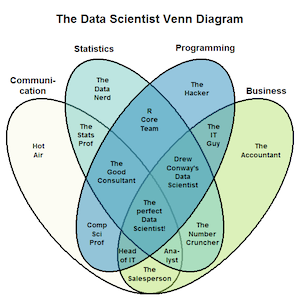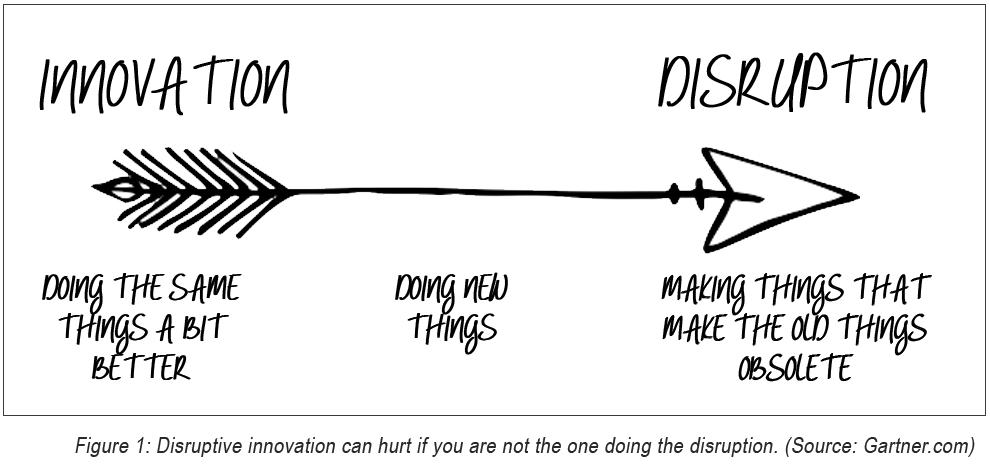- 10 Years of Experience in Data & Analytics
- 5 Years of Experience in Programming & Computing.
- 4 Years of Experience Leading Projects & Product Design.
- 3 Years of Experience in Data Science.
- Proven Ability to Design & Build Data Science products.
What I Do

I am data science and product management leader currently working in the Minneapolis metro. I have formal training in statistics, am familar with traditional & cutting edge machine learning techniques, and am a capable programmer and data architect.
There are four core areas of data science that are crucial for success. I have devoted a near equal amount of time to developing myself in these four areas.
Communication
Many times in my career I have lead my product and project teams and been the primary communication between the team and executive leaders. I have presented results to executive stakeholders and explained modeling results to users. I cultivate this experience regularly and enjoy the opportunity to collaborate across disciplines.
Statistics
I have completed graduate coursework in Regression, Time Series Analysis, Analysis of Variance, and Data Mining at Penn State.
Here are some completed statistical analysis.
Using Lasso and Ridge Regression for Variable Importance
Using Clustering to Perform Customer Segmentation
Using Support Vector Machines to Predict Promotion Effectiveness
Using ANCOVA and Tukey to Find Optimal Banner Placement
Programming & Technology
I am a proficient R & Python programmer, and am capable of integrating the full stack.
This includes:
- Linux Fundamentals and System Management including Bash Scripting
- Provision & Configuring Databases (SQL & noSQL)
- Developing Algorithms & Statistical Models
- Configuring Data Piplines
- Building & Scaling Services
Here are some examples:
Scaling an R Algorithm for Production Integration
Business
I have developed a subject matter expertise in Transportation & Logistics for Supply Chain. I have been engaged by technical teams to provide guidance on multiple occasions and have attended numerous conferences on the subject. I enjoy immersing myself in a set of problems an bringing cross-discipline perspectivs.
Why I am a Product Manager
 Like most economics majors, I imagined myself as a business owner; the training prepares one to understand the deep mechanics of pricing, optimization, and forecasting that are crucial. As I grew my career, I learned that most traditional business leaders do very little of this. Deep expertise in the mechanics of the business is often relegated downward to the lower levels of the company. I believe this is the fundamental reason most businesses are rife for disruption.
Like most economics majors, I imagined myself as a business owner; the training prepares one to understand the deep mechanics of pricing, optimization, and forecasting that are crucial. As I grew my career, I learned that most traditional business leaders do very little of this. Deep expertise in the mechanics of the business is often relegated downward to the lower levels of the company. I believe this is the fundamental reason most businesses are rife for disruption.
Disruptors such as Sergey Brin, Mark Zuckerberg, and Elon Musk have revolutionized their industries because they are fundamentally driven by a deep and abiding understanding of their technology, product, and customers. Many companies have taken a core part of their business, and treated it as a non-critical understanding. Lack of a CPA prevents one from being CFO, but knowledge of technology and data does not bear the same impact to lead technology strategy. I am not satisfied with sitting on the sidelines or staying in my lane. Everything within a product is my lane, and I will drive it to success.
The product management discipline is ideal for this approach. Product managers must understand every facet of their product from the technology to its users. Understanding is often greatly assisted by data, so a Data Scientist can often make an ideal product manager.
Why I am a Data Scientist
 The best way to understand a company is through its data. Data is the method by which you mine insights, with analytics being the application of quantitative methods to strategic thought.
The best way to understand a company is through its data. Data is the method by which you mine insights, with analytics being the application of quantitative methods to strategic thought.
Numerous times in my career I have seen outsiders provide a solution so radical a departure from the way the business would have otherwise approached it, that its effectiveness is transformational. Survival models typically used in biology research can be leveraged to predict customer churn. Chatbot NLU models can be turned on their head for real time monitoring of EDI feeds. Customer segmentation and social network modeling can be done in a way that finds the optimum sales path to a customer. Matching algorithms for medical research are used on dating sites, and algorithms from genetics can optimize a stock trading platform.
Disruption comes from cross-discipline study, and data science provides an avenue for the application of radical solutions to age old problems. Early in my career I did not consider myself a “science”, “math”, or “computer” guy, but true business leaders learn all parts of their business and whatever skills are most effective– and the cutting edge of how businesses compete is now in these fields, and I have adapted to leverage them.
What I believe
I manage data scientists and product managers tasked with building great products by understanding the business, the data, and the technology simultaneously.
I do this by remembering a few core principles.
- Good solutions and technology exist only with respect to the problems they solve.
- There is no replacement for competency. Not even leadership skills or attitude.
- A positive attitude is almost always at least one required competency of any task.
- Innovative solutions usually come from unfamilar and even confusing spaces.
- Cohorts of people with expertise always outperform the brilliant loner.
- There is no flag at birth that determines mathematical or technical acumen.
- Intelligence is no substitute for knowledge, which schooling sometimes provides.
- It is impossible to fully understand a problem before trying to solve it.
- It is wise to surround yourself with people who know things you do not.
- Easy work is often not worth doing. Gravitate to the challenge, and fail often.